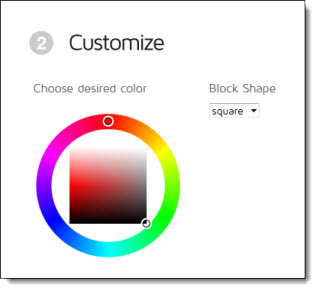A “QR” Code is a “Quick Response” Code. Think of them as UPC, or SKU, codes on steroids.
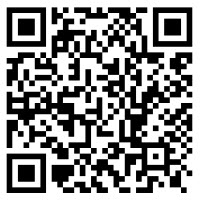
The QR code is a great way to allow an audience to quickly capture your contact information, website, or your department’s page on the company intranet. And, using a QR code is free! Plus, virtually every online capable smartphone has free QR code reading applications. To use, just launch the app, take a picture of the QR code and it will automatically open a webpage.
At TLC Creative Services’ PowerPoint training programs, I open the session with a list of resources, one being a QR code to this blog. At the end of the training, my “Thank you” slide includes a QR code that goes to the TLCCreative.com contact page. Both are much quicker and easier than everyone scrambling for a pen to write down the info (and everyone has their phone out reading email, texting and probably checking the score of the game already).
There are many websites that let you create your own QR code for free. For this tutorial, I am using BeQRious.
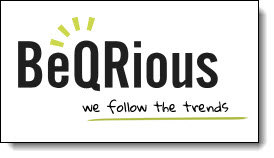
What sets this site apart from many other free QR code generators is the numerous types of QR codes you can generate, but also the tracking and managing of your QR codes and data. Plus, generating a code is simple.
1. Select the type of code you want to generate: choose from web URL, email, phone, text, vCard, SMS, YouTube video, Facebook profile, Twitter profile, map, or graphical. Enter the information into the text box.
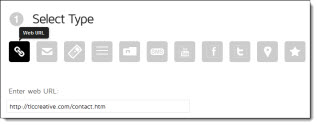
2. Customize the color of the code (QR codes do not need to be black and white, just high contrast).
3. Download the QR code as a JPG, PNG, GIF, or PDF. And this site lets you choose how large you want your file size to be. The PDF option is great because you get your code as a fully scale-able vector image that can be made as large or small as you’d like, without losing any quality. At TLC Creative Services, we open the PDF in Adobe Illustrator and export as a .emf to have a vector (ie. scalable) graphic for PowerPoint. Or export as a .png is another good option for use on PowerPoint slides.
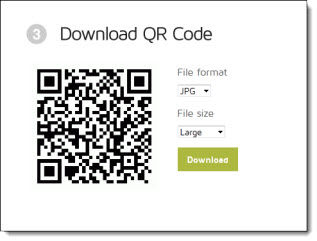
4. You can then insert your new QR code into your presentations to make it easy for your audience to connect with you.
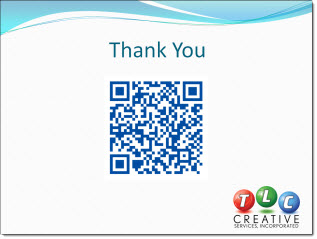
5. Within PowerPoint (using 2007 and above), use the Picture Color feature to change the QR Code to any of the template colors. As long as there is contrast between the QR code and the background, it will work.
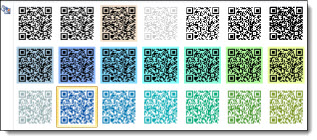
– Troy @ TLC

